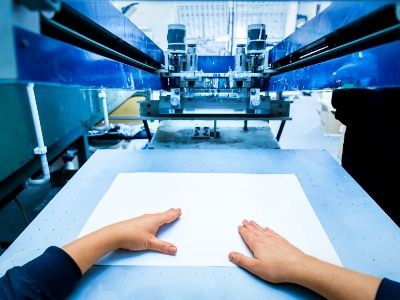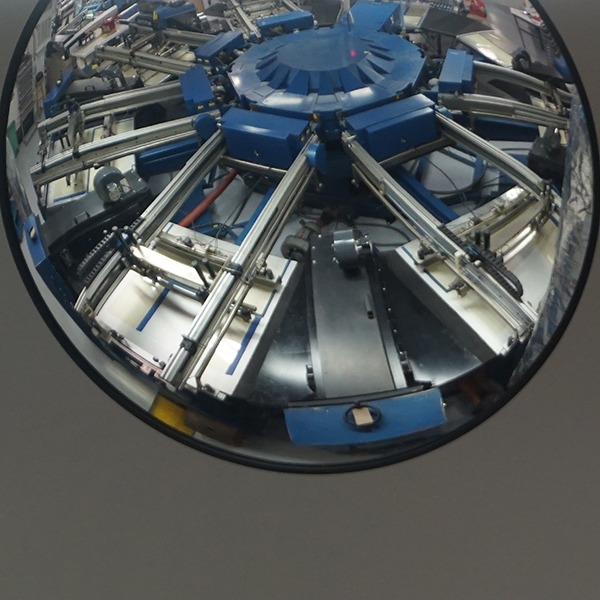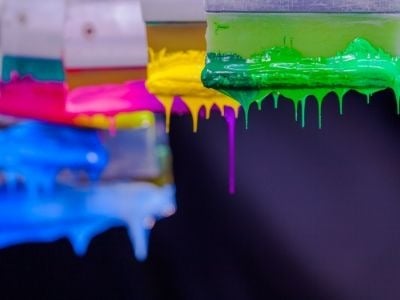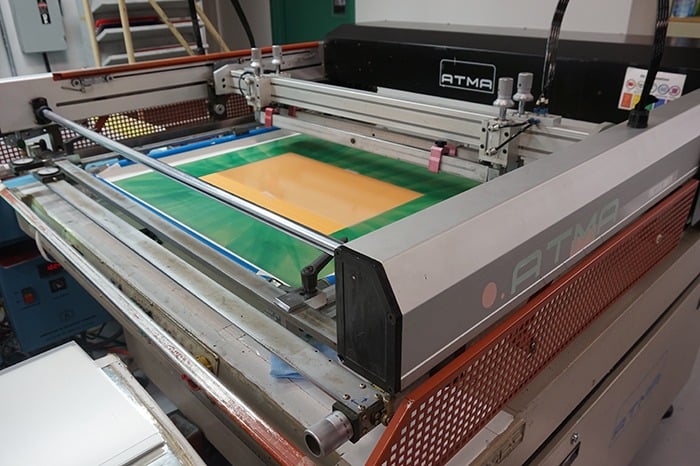What is Screen Printing?
Screen printing is a process in which images are printed using a mesh screen and ink. Screen printing uses a wide range of materials and substrates for inks to be printed on. In BTI’s instance, we only use one screen for each layer of the functional film or decorative design. Graphic tee shirt manufacturers use a screen printing process too. In their case, only one color is printed with every screen. Although, screen printing is used for more than just graphic tee shirts.
For printed electronics, each layer of the design is an ink, conductive dielectric or encapsulant, that contributes to a larger printed circuit.
The conductive ink traces can be a replacement for wires. Screen printing can work with low or high volumes.

How do Screen Printing Presses Work?
First, the design goes through a pre-press production phase. Now graphic designers and engineers create layers of a design that is also known as a film positive.
Once production gets the design the screens begin to be made.
Some small manufacturers have screen printing equipment that is a single press or a carousel. A carousel, also known as a multicolor or multi-static press, is comprised of six print and cure stations in one circular group.
The layout of many screen printers is based on a clamshell function.
Some single presses can be precision presses. The layout of precision presses is a little different.
A precision printer moves the screen in two or four corners. The screen goes straight up and down. This up and down motion has a smaller margin for error when compared to the clamshell. Precision printers are essential in creating consistency in ink deposition for functional products like printed electronics.
Steps for Screen Printing
STEP 1: Prepress checklist
Many of the projects that operate through BTI start off as a design. Our Graphic designers and engineers check their list with the specifications of the customers.
Step 2: Films are produced

Now the screen maker begins to pick a mesh screen that matches the requirements specified by the engineering team. The engineer has to consider the difficulty of the layers and the surface of the substrate it’s printed on.
Step 3: The screen is prepared
Next, the screen maker can apply a layer of emulsion.
Step 4: The emulsion is exposed
The emulsion used is light reactive. Once the emulsion is placed under the light it will begin to develop and harden. Before it goes under the light the operator places the film positive on top which lets the light touch the stencil. When the emulsion is covered it does not harden.
Step 5: Stencil created
The emulsion that is still soft will be washed off gently. Whatever gets washed off leaves an empty area for the ink to pass through. The ink that gets passed through the stencils will leave the design on the substrate.
All the layers need to have a separate stencil. Once all of the layered stencils are created and dried, it’s ready for print.
STEP 6: Ready to Print
The screen frame with mesh and stencils gets loaded into the press with precision. Then the substrate is placed flat under the stencil.
Step 7: The ink is pressed through the screen onto the substrate
Now the stencil gets placed on top of the substrate. Ink is added on the stencil before the squeegee. Next, the squeegee presses the ink through the screen.
Step 8: The product is dried
Depending on the kind of ink used, it will get heat dried or cured through ultraviolet UV light. The curing process dries out water or solvents in the ink.
Step 9: Quality
Quality is insured twice. In process inspectors check the products quality throughout the printing process. The end of drying or curing quality team double checks for any printing errors. They ensure that the products meet certifications and approvals needed by customer expectations.
Meet the Author

Ashley Foster is a graduate of Slippery Rock University, where she earned her Bachelor’s degree in Business Administration, majored in Business Management and minored in Marketing. While Ashley was studying at SRU she found a passion for marketing. Although she is busy working, she spends her free time traveling and hiking with friends. She is also a volunteer for the American Marketing Association, Pittsburgh Chapter, and an active alumni member of FCCLA.